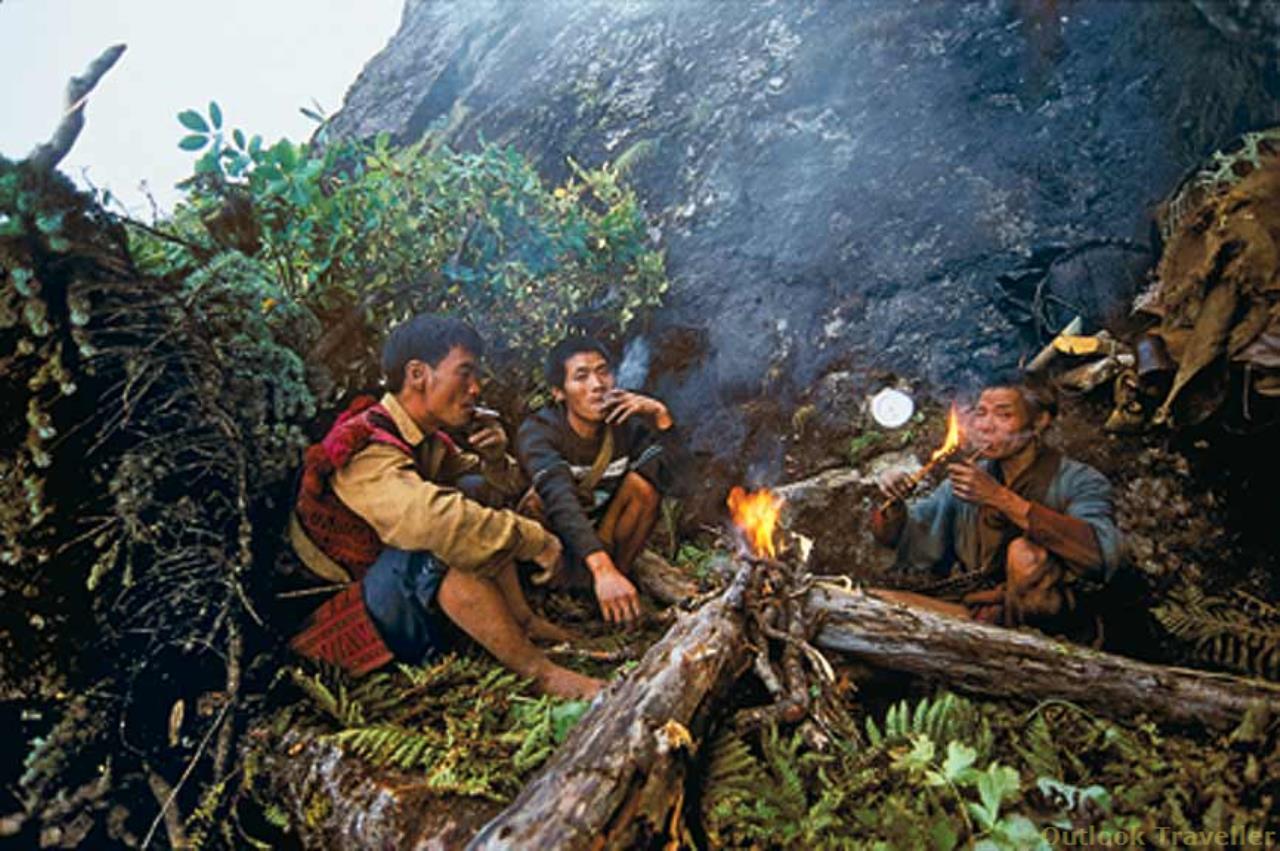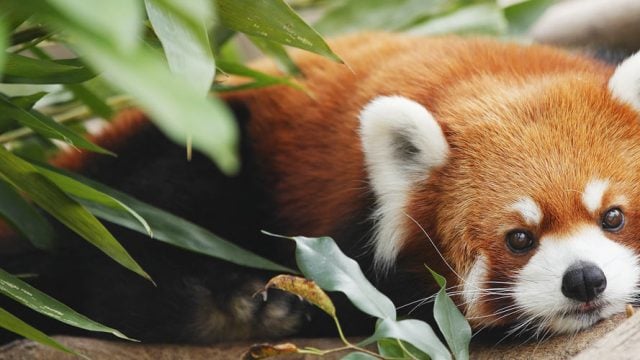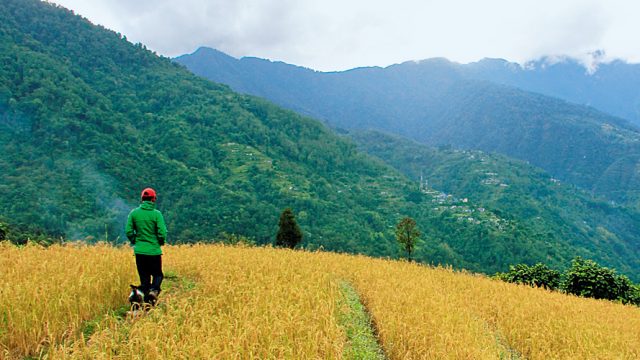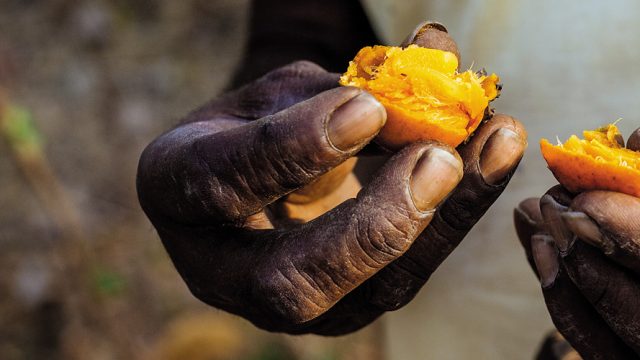1. Waterways The raw, even rabid, rivers of Arunachal go where the roads run
2. Rumours of war
Arunachal’s hills and jungles bear an unlikely tracery of international conflict. The 1962 India-China war is memorialised in the incongruous beauty of Walong, Kibithoo and Helmet Top in Anjaw and at Sela, Tawang and Bumla. The more distant memory of WWII has left intriguing remnants in the Stilwell Road at Pangsau Pass and the ‘Lake of No Return’ in Changlang, where the Pangsau Pass Winter Festival is an exciting mix of sarkari and tribal fanfare. Real adventurers should set out to visit one of the hundreds of WWII aircraft wrecks (pic above) still being discovered in the eastern districts. The ‘Aluminium Trail’ marks the deadly adventure of flying the notorious ‘Hump’ route to China. If you grew up on Commando comics, these scattered remains of forgotten battles can give you the charge of a quest and all the destination you need. For treks to ‘Hump’ crash sites, contact Abor Country Travels (aborcountrytravels.com) and Eastern Safari (03804-222524, [email protected]). For Pangsau, contact the extra assistant commissioner, Nampong (03800-264211, [email protected]).
3. Roads less travelled
Yes, half the fun is in getting there. This is about the other half—the sheer pleasure of getting around. And, in Arunachal, there’s more than one way to do it. Motorcycle tours here are aplenty, but few will match the personal attention you’ll get from Anuj Singh and Shahwar Hussain (from Rs 30,000 for a seven-day trip; 9810320041, 9871331236; chainreaction india.com). Help Tourism’s evocative ‘Great Indian Elephant Safari’ (pic below) is rightly famous but similar or shorter trips in the Namdapha area can be put together by the resourceful Phupla Singpho (03807-222296, [email protected]). The rugged beauty of the Dirang Valley is best experienced on foot. Jungle Travels (0361-2602223, jungletravels india.com) offers a trek that takes in the Dirang Monastery and Monpa villages (from Rs 34,405 per person for 10 nights). They also offer a two-week bicycling tour—you need to bring your own bike—that pedals its way to Dirang, Sange Dzong, Tawang and Tenga (from Rs 33,933 per person). Now here’s a route to rival the Manali-Leh road.
4. People watching
Arunachal Pradesh has 26 major tribes and several sub-tribes, and the relative inaccessibility of the state has meant that most of them continue to lead traditional lives, even as they adopt other manners and modcons. There are many operators who organise ‘tribal tours’. But choose your operator carefully to ensure you do not disrupt life in villages like Ziro, where the Apatani live, or Along, home of the Adi Gallong. These are the precautions taken by Jungle Travels (Rs 22,893 per person for 11D/10N; 0361-2603289, jungletravelsindia.com) and Help Tourism (approx. Rs 30,000 per day for a group of six; 0361-2842048, helptourism.com): small groups; pre-departure briefing; local guides; and a list of dos and don’ts. These operators wear their cultural sensitivity on their sleeves. But even without a guide to tame you, it’s not that hard to be a sensitive tourist, is it?
5. Far corners
‘Shangri-la, undiscovered, unspoiled…,’ they say. You’d imagine that merely setting foot in Arunachal is to intrepidly explore the Great Unknown. But beyond Tawang and Ziro, Tezu and Namdapha, lie truly lost worlds. In a distant corner, there’s Vijaynagar, bordered on three sides by Myanmar and accessed by air—or on foot, through hills and forests unknown. There’s Walong and the villages in the vicinity (pic left)—in the extreme east, not far from Dong, where India’s first rays of sunshine fall—where a bitter battle was fought in 1962. Further up, at 6,000ft, in West Siang district, is Mechuka. Snow-capped mountain views, a 400-year-old Buddhist monastery, dramatic landscape and few visitors. Pack your bags, leave your map behind, find your lost world.
6. Flower power
Arunachal’s astonishing floral diversity doesn’t just have the botanists slavering—who’re faced with the happy prospect of discovering new species, like this previously undocumented species of thistle (pic right), photographed in 2005. That’s because it’s the orchid capital of India, home to over half of our nearly 1,150 species, and orchids are popular. Travel the Tezpur-Bhalukpong-Bomdila-Tawang circuit to experience their transient beauty. Tipi, 5km from Bhalukpong, is home to a dazzling orchidarium, where you’ll encounter the Lost Indian Lady’s Slipper and the Blue Vanda. The orchid sanctuary at Sessa, 24km from Tipi, harbours over 200 varieties of sub-tropical orchid.
7. For woods for the trees
For forest-lovers, Arunachal is the closest it gets to heaven on earth (or at least India). An astonishing 82 per cent of it is under forest cover, offering a remarkable range of forest types. If you were to make a south-north journey—think of Arunachal as a wall you’ve set out to climb—you’ll journey up no less than six different forest types. First, there’s the plains, the entire longitudinal length of which features tropical semi-evergreen forest. Next, the subtropical forest, again running the length of Arunachal. Then, pockets of pine forest—the Dirang Valley (above left) in Kameng and Mechuka in West Siang are good examples. Now, temperate forests form a thick band across. Finally, the northern edge, bordered prettily by alpine forest. This is one easy themed trip: no planning needed, land up and enjoy.
8. Great and small
Virtually all of Arunachal is a biodiversity hotspot. Its best-known national park, Namdapha, spread over 1,985 sq km, is also one of the country’s largest. But that isn’t what makes it special. Not only does the park’s wide altitudinal range (200–4,571m) ensure a variety of biomes, its location at an overlap of two eco-zones bestows on Namdapha an extensive diversity of flora and fauna (nearly 100 mammals and 450 bird species). This is also the only reserve in the world that harbours four big cats. Smaller, but also significant, is Mouling National Park. Situated in the Upper Siang district, it’s a good place to spot tigers, leopards, barking deer, red panda and gibbons (like the hoolock gibbon above). For birding, Eaglenest Wildlife Sanctuary in western Arunachal, is home to about 420 species. Formerly under the protection of the Bugun tribe, the sanctuary is famous for having yielded a new species in 2006 (the Bugun Liocichla). Other reserves of note include the Pakke Tiger Reserve and Kameng Elephant Reserve. For Namdapha, contact field director (03807-222249; namdapha.in). For Eaglenest, contact divisional forest officer, Pakke Tiger Reserve (03778-222229). For tented accommodation there (Rs 1,500 doubles), call Indi Glow, Bugun Welfare Society (03782-273359).
9. Higher plains
The hills are always alive in Arunachal, but so are the plains. Cross the Brahmaputra and pause awhile in Tezu, Chonkham, Pasighat—all gateways to the state—and discover why they’re more than chai stops. Tezu, a Mishmi outpost, was only accessible by boat until six years ago. A bridge across the Lohit now connects it to Assam, easing the flow of the hundreds of pilgrims who arrive to take a dip in the Parasuram Kund. On the opposite bank lies Chonkham, framed by mustard fields and mountains. Within shouting distance of Namdapha, it is best known for its Hinayana Buddhist monastery. Further east, on the banks of the Siang, cosseted by mountains on three sides, is Pasighat. Arunachal’s oldest town and a legacy of the Raj, it hosts the Solung Festival in August-September. The rest of the year, it’s just a quiet, happy spot. Contact Duyu Tours and Travels (9436044905, [email protected]).
10. Because it’s there
Because it’s hard to find a good map of Arunachal, because it’s a country without hotels (mostly). Because you’ll end up in Circuit Houses and Inspection Bungalows, because it’s a frontier with China, Tibet, Bhutan and Burma. Because you need a permit to go there. And you’ll keep it as a souvenir for years. Because you can get there by river ferry or helicopter! Because it rains for more than half the year but not right now. Because its rivers will soon be choked with more than 300 dams but aren’t yet. Because the sun rises at 5am and you will too.
Bramhaputra
Eaglenest Wildlife Sanctuary
forest lovers





